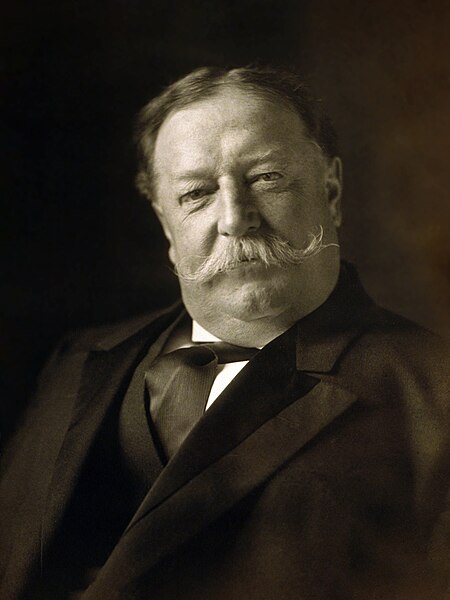Presidency of William Howard Taft
The presidency of William Howard Taft began on March 4, 1909, when William Howard Taft was inaugurated as 27th president of the United States, and ended on March 4, 1913. Taft was a Republican from Ohio. The protégé and chosen successor of President Theodore Roosevelt, he took office after easily defeating Democrat William Jennings Bryan in the 1908 presidential election. His presidency ended with his defeat in the 1912 election by Democrat Woodrow Wilson.
Image: William Howard Taft, head and shoulders portrait, facing front
Image: 1894 US Presidential Seal
One of a series of candid photographs known as the Evolution of a Smile, as Taft learns by telephone from Roosevelt of his nomination for president
Taft, seated at center, and his cabinet (September 1910), left to right: Richard Achilles Ballinger, George von Lengerke Meyer, Philander C. Knox, Charles Dyer Norton, Frank Harris Hitchcock, James Wilson, Franklin MacVeagh, George W. Wickersham, Charles Nagel
Dollar diplomacy of the United States, particularly during the presidency of William Howard Taft (1909–1913) was a form of American foreign policy to minimize the use or threat of military force and instead further its aims in Latin America and East Asia through the use of its economic power by guaranteeing loans made to foreign countries. In his message to Congress on 3 December 1912, Taft summarized the policy of Dollar diplomacy:The diplomacy of the present administration has sought to respond to modern ideas of commercial intercourse. This policy has been characterized as substituting dollars for bullets. It is one that appeals alike to idealistic humanitarian sentiments, to the dictates of sound policy and strategy, and to legitimate commercial aims.
Hukuang loan, issued 15. June 1911





